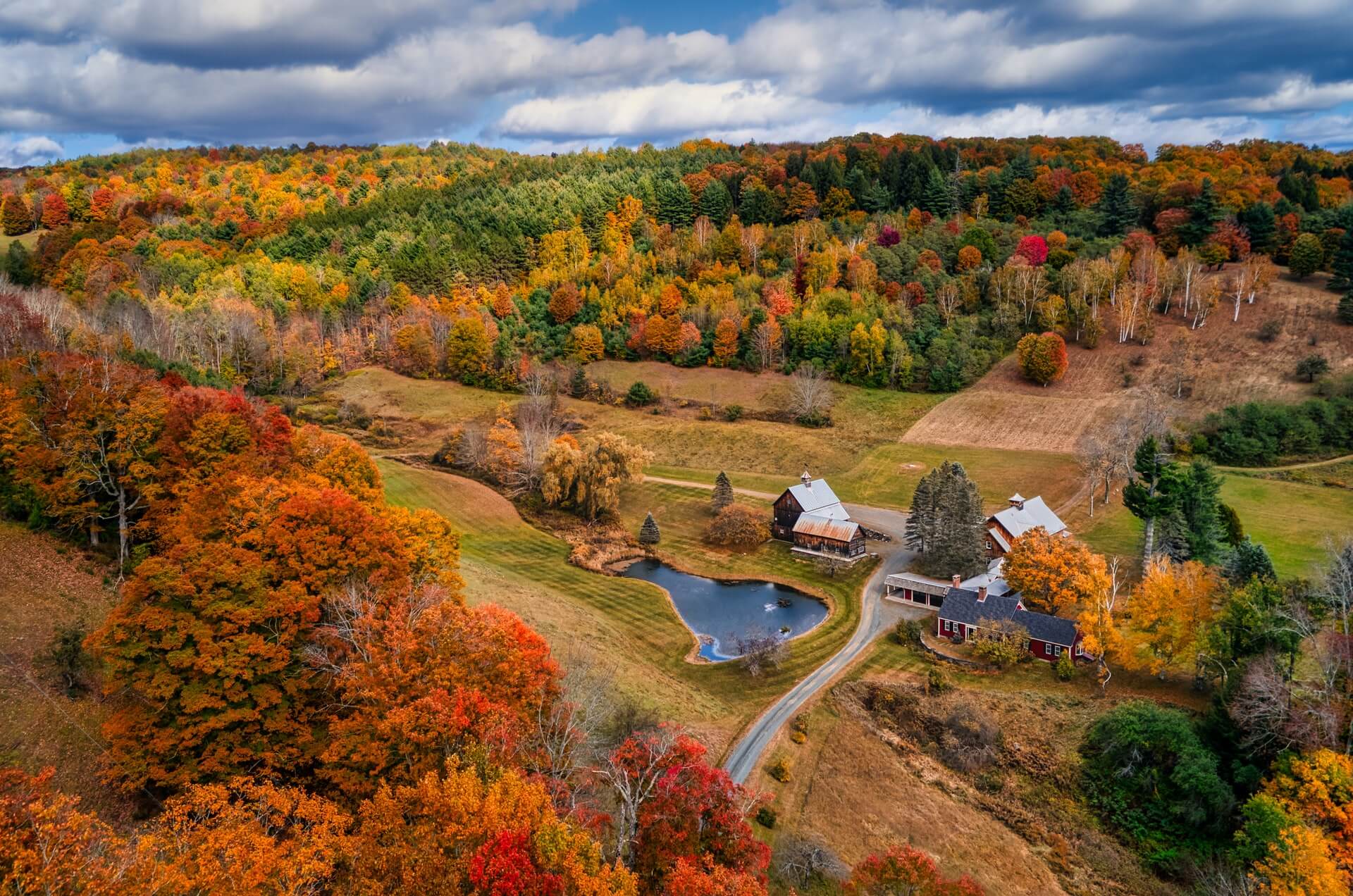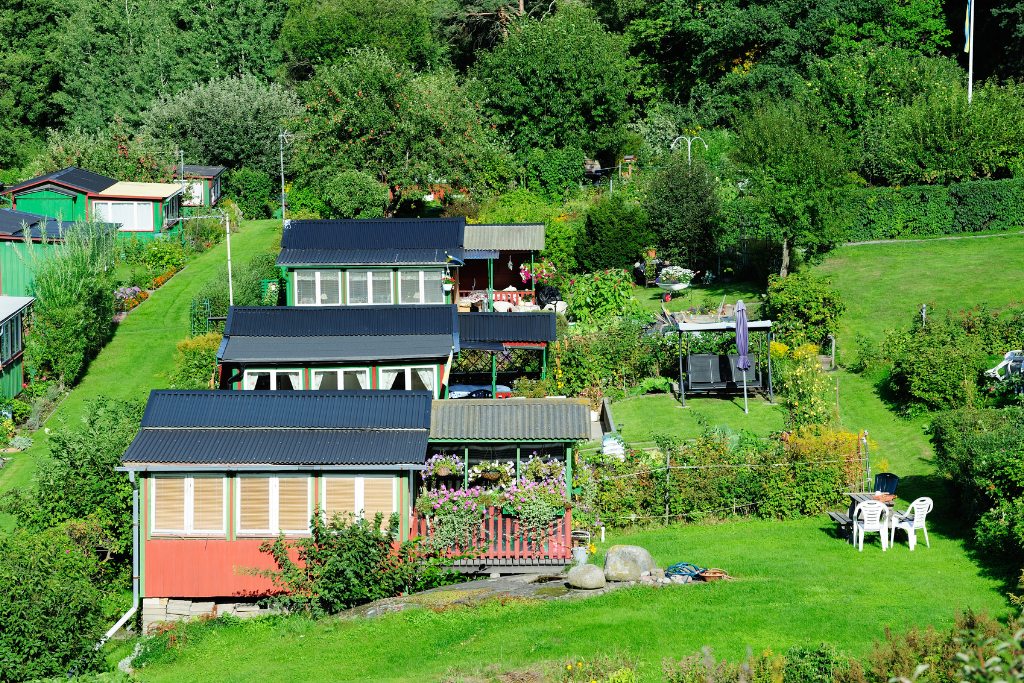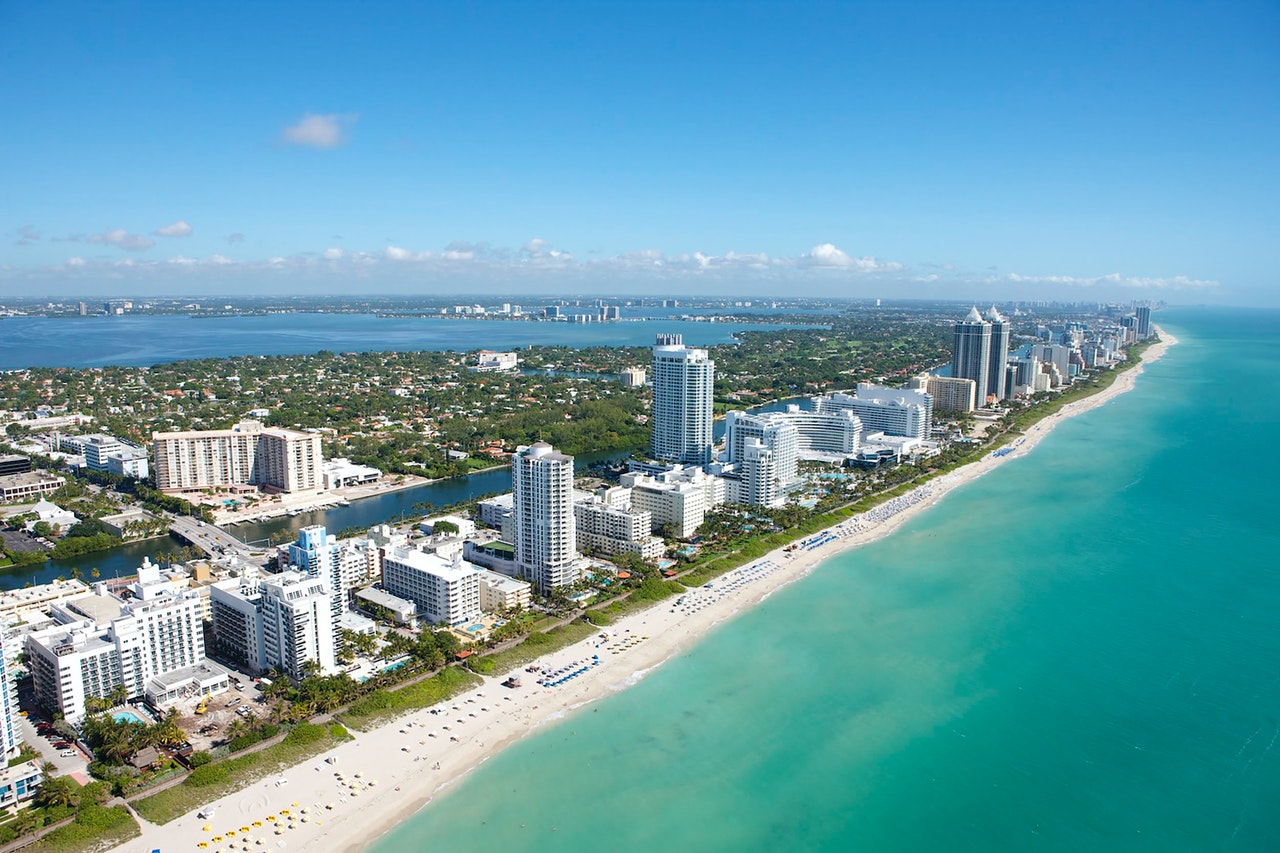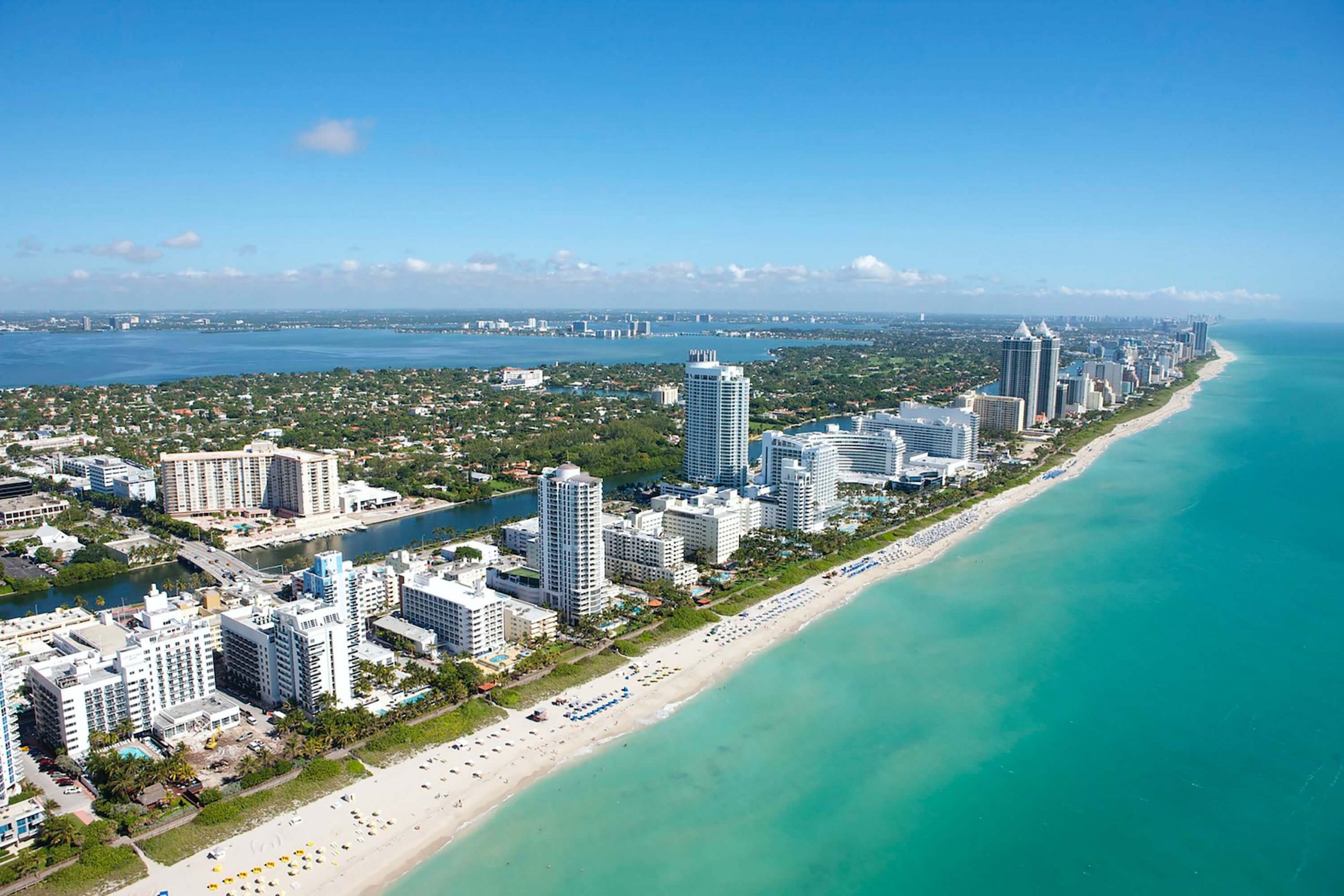1. First steps before moving to Vermont
Find a reliable moving company, truck rental or moving container
For your move to Vermont, you will need to hire a reliable moving company or take on the move yourself. To find the best moving company in Vermont, look for helpful reviews, a professional-looking website, and years of experience.
Planning a move to Vermont? Take a look at our selection of:
Finding a job
As of September 2023, Vermont had an unemployment rate of 1.9%, which is the higher from 1.8% in August 2023.
Jobs that are often in high demand are truck driver, registered nurses, and retail sales associates.
Finding a job in Vermont is easier if you search online for job openings. Popular websites for this include LinkedIn, Indeed, and SimplyHired.
US Bureau of Labor Statistics (Oct 2023)
Getting there
Below are some travel options to get to Vermont from different parts of the country include:
Flying: Flying is the most convenient way to move to Vermont. Book a flight from your departure city to Patrick Leahy Burlington International Airport, depending on your destination within Vermont.
Train: You can also take the train with Amtrak as an alternative.
Bus: If you want another way to travel, Vermont cities have bus services like Greyhound, and Flixbus, that can get you there.
If you are flying and require assistance with moving your belongings, you can explore options provided by reputable moving companies.
Must dos before your arrival
Moving to Vermont may be exciting and will challenge you in many ways. By knowing these things beforehand, you will be better prepared for your new life in the city.
- If you are moving to Vermont permanently, and you receive a lot of mail (excluding packages), you may want to sign up with USPS’s mail forwarding service. Mail forwarding allows your mail to be redirected to the right address for a given period of time. The fee for regular mail forwarding is only a little over a dollar for 6 months. If you want to extend the service, you will have to pay around $20 for 6 months more. You can begin your mail forwarding process by signing up on USPS’s website or directly at your local Post Office.
- Moving to a new place is an opportunity to start afresh. If you’re moving to Vermont, selling or donating the items you won’t need will go a long way in making your move easier. You can sell your old household items and personal possessions, and anything that will not be useful. Pick out the items that will not be useful for you in Vermont, then decide if you want to sell them on websites like Craigslist or Facebook Marketplace or donate them to a non-profit organization.
2. Upon your arrival in Vermont
Must dos right upon your arrival
- Get familiar with your neighborhood, and make sure to take note of the important emergency numbers.
- If you roam around the city for work or just simply checking on it, it would be great to purchase a daily pass to save money.
- Locate the essential facilities like the nearest hospital, police station, and fire department for your safety and in case of emergency.
Most people get around Vermont by car. In cities like Burlington, it is preferable to walk or even ride your bike. In Burlington, you can ride the multiple bus lines, some of which are for free.
The public transportation system in Burlington is called the Green Mountain Transit (GMT). The best way to get around Vermont remains by car, due to the distances between houses and shopping centers.
Exchanging your driver’s license
When arriving in Vermont, you will have 60 days to get your driver’s license. To get your driver’s license, fill out this application form and bring it with you to your local DMV office.
Register your vehicle
If you’ve brought your out-of-state vehicle with you to Vermont, you have 15 days upon arrival in Vermont to register your vehicle at a Licensed Inspection Station.
Change your address
Along with mail forwarding, you will also have to update your new address with the concerned authorities in Vermont, like The DMV and your voter registration.
Changing your address with your employer, bank, doctor, insurer, and service providers so that you can avoid any complications further down the road.
Setting up a bank account
Obtaining a bank account in Vermont is a straightforward process. You only need to present a copy of your valid state or government-issued ID, such as a driver’s license or passport. The bank with most branches in Vermont for easy access is M&T Bank . Vermont’s residents has access to a whopping 38 offices of M&T Bank in the state.
Getting health insurance
Getting health insurance is an excellent way to get peace of mind when it comes to your health. With health insurance, you will not have to worry about spending a ton of money in case of a health-related emergency. The state of Vermont proposes a website to help you with your health insurance search. Simply choose Vermont as your state and create an account.
|
Type of healthcare |
Cost |
|
Employer-sponsored health insurance |
$146.25 |
|
Non-employer-sponsored health insurance |
$735.00 |
|
Gym |
$78.75 |
Numbeo (Oct 2023), Value Penguin (Oct 2023), & EHealthInsurance (Oct 2023)
3. Best places to live in Vermont
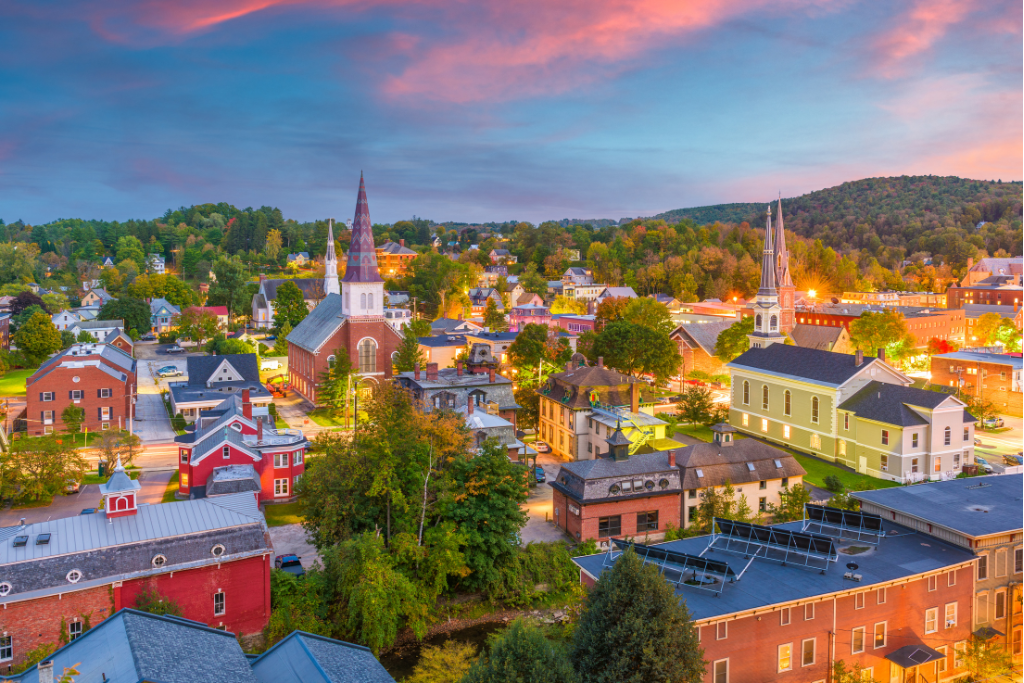
If you are moving to Vermont with your family, you should consider Shelburne because of its low crime rates, good safety score, high quality public schools and family-friendly activities.
As a single person, you should consider moving to Burlington due to the many dating opportunities and exciting nightlife.
If you are moving as a couple, Newport is perfect for you as the cost of living is affordable and the overall quality of life is great.
Setting up home services
Setting up essential home services like electricity, water, gas, and internet in Vermont is a straightforward process.
- Electricity bills in Vermont are lower compared to the rest of the US, and not because of the cost but because of the lower usage. People use less electricity in Vermont as the summers are not too warm and winters are not too cold either. To set up electricity, create an online account with Green Mountain Power. For water set up, you will need to contact your local municipality or city. For gas set up, click on start service on the VGS website.
- The best internet providers in Vermont will have bundling options, various speeds, and multiple package options at reasonable prices.
Should you rent or buy?
The average Vermont home value is $388,868, went up by 5% from 2022. Vermont’s price per square foot to buy an apartment outside the center is $173.88.
Finding an apartment for rent in Vermont is easy, utilize websites like Zillow, Apartmentguide, and Apartments.com. When seeking a house, these websites—Zillow, Realtor, and Century21—will assist you in your search for a home in Vermont.
Cost of rent in Vermont
|
Area/Neighborhood |
1-bed apartment |
3-bed apartment |
|
Burlington (Outside of Center) |
$1,783.33 |
$2,400.00 |
Cost of buying a property in Vermont
|
Area/Neighborhood |
Average home price |
|
Burlington |
$388,868 |
Numbeo (Oct 2023) & Zillow (Oct 2023)
Consider getting home insurance
Home insurance is not mandatory in Vermont. However, if your property is mortgaged with a lender, the lending company may contractually obligate you to purchase insurance to safeguard the amount outstanding on the loan. The state of Vermont is quite prone to storms and floods. Getting insurance to protect you from spending on the damages caused by these natural disasters is a great way to get peace of mind when it comes to your home.
4. Cost of living in Vermont
|
Category |
Monthly cost |
|
1 bed apt rent outside city center |
$1,783.33 |
|
Groceries Numbeo’s grocery list ($63.49 multiplied by 4) |
$253.96 |
|
Utilities Electricity, heating, cooling, water, garbage |
$197.49 |
|
Internet with 60 Mbps |
$64.50 |
|
Transit pass |
$33.00 |
|
Entertainment Meal, taxi, movie |
$76.00 |
|
Gym membership |
$78.75 |
|
Total |
$2,487.03 |
5. The weather in Vermont
In the summer, Vermont gets quite humid. Temperatures in the summer months range between 75°F to 82°F. Winter in the state is very snowy and gets chilly. The average temperatures in January can be as low as 2°F. When it snows in Vermont people love to go skiing, skating and sledding.
6. What to do as a local in Vermont
Vermont is very famous for its magnificent green mountains, adventurous skiing, forested natural beauty, as well as beautiful hiking trails for residents and visitors to enjoy.
For fun activities, you can go to Ben & Jerry’s Ice Cream Factory in Waterbury, hike to Camel’s Hump, Ski at Killington Ski Area, and visit the Sugarbush Resort.
The three most popular grocery stores in Vermont are Hannaford, Farmer’s Markets, and Shaw’s.
The top big chain stores in Vermont are Costco, Walmart, and Food Lion.
Some iconic places to eat in Vermont include Al’s French Fries and Handy’s Lunch.
Visit the popular cities in Vermont: Burlington, Montpelier, and Stowe.
7. Fun facts about Vermont
- Fun Fact #1: Vermont ranks first in craft breweries per capita.
- Fun Fact #2: Vermont is the largest producer of maple syrup in the US.
- Fun Fact #3: Ben and Jerry’s Ice Cream is produced in Vermont.
Conclusion
Vermont is renowned for its picturesque landscapes, which include rolling hills, woods, and stunning mountains such as the Green and White Mountains. The state offers multiple schools and institutions, including the University of Vermont and Middlebury College, which offer opportunities for good education.
While moving to Vermont has its pros and cons, checking the cost of living is essential to making sure you will live comfortably in this city and call it home. It’s a good idea to research specific neighborhoods within the state and consider your priorities to determine if Vermont is the right fit for you and your family.
Need a trusted moving company for the area? Discover the 5 best movers in Vermont.
